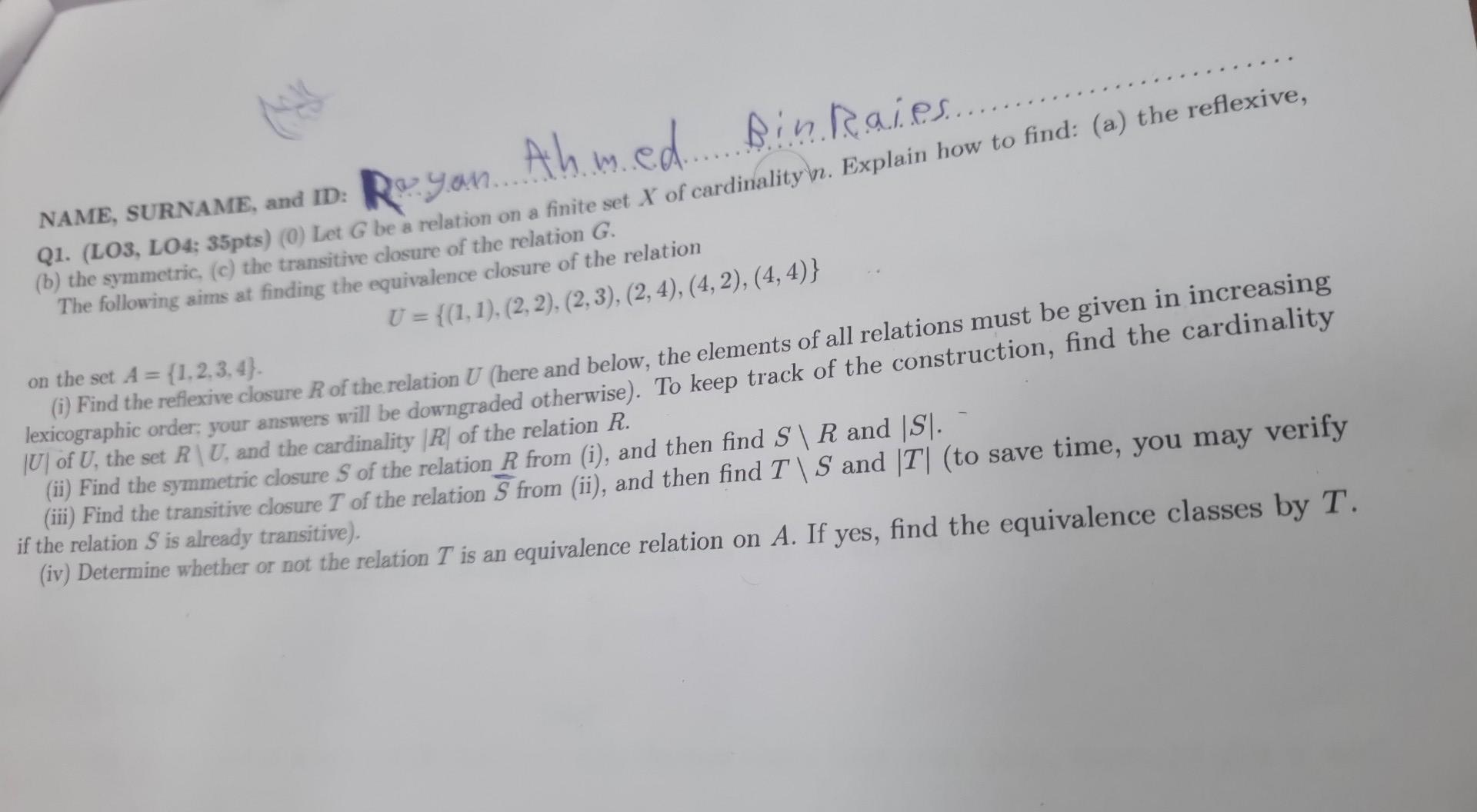Answered step by step
Verified Expert Solution
Question
1 Approved Answer
(b) the symmetric, (c) the transitive closure of the relation G. The following aims at finding the equivalence closure of the relation U={(1,1),(2,2),(2,3),(2,4),(4,2),(4,4)} on the

(b) the symmetric, (c) the transitive closure of the relation G. The following aims at finding the equivalence closure of the relation U={(1,1),(2,2),(2,3),(2,4),(4,2),(4,4)} on the set A={1,2,3,4}. (i) Find the reflexive closure R of the relation U (here and below, the elements of all relations must be given in increasing lexicographic order; your answers will be downgraded otherwise). To keep track of the construction, find the cardinality U of U, the set R\U, and the cardinality R of the relation R. (ii) Find the symmetric closure S of the relation R from (i), and then find S\R and S. (iii) Find the transitive closure T of the relation S from (ii), and then find T\S and T (to save time, you may verify if the relation S is already transitive). (iv) Determine whether or not the relation T is an equivalence relation on A. If yes, find the equivalence classes by T
Step by Step Solution
There are 3 Steps involved in it
Step: 1

Get Instant Access to Expert-Tailored Solutions
See step-by-step solutions with expert insights and AI powered tools for academic success
Step: 2

Step: 3

Ace Your Homework with AI
Get the answers you need in no time with our AI-driven, step-by-step assistance
Get Started


